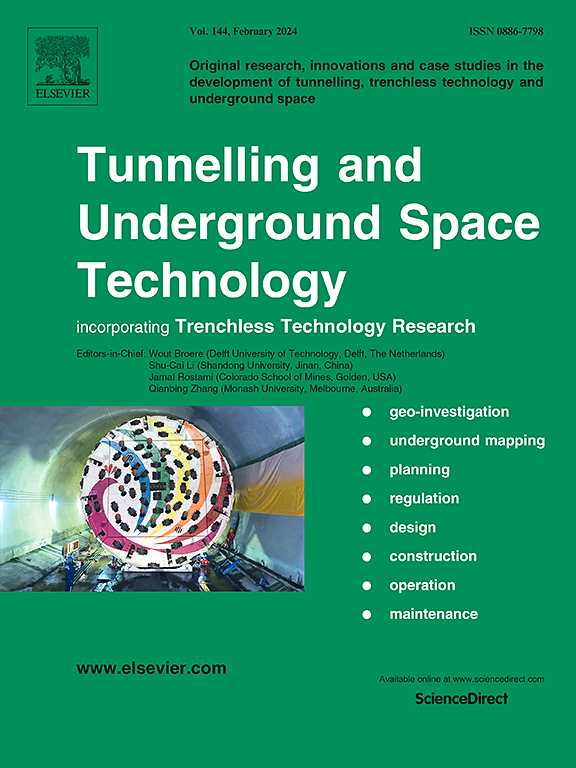Impact of initial dry density on the evolution mechanism of mud and water burst in fault fracture zones: A series of experimental studies
IF 6.7
1区 工程技术
Q1 CONSTRUCTION & BUILDING TECHNOLOGY
引用次数: 0
Abstract
Mud and water bursts within fault fracture zone frequently lead to casualties, equipment damage, and project delays, posing significant risks. A thorough scientific understanding of these mechanisms is essential for effective disaster prevention and control. To investigate the evolution mechanisms of mud and water burst in fault fracture zones, an experimental apparatus was designed to simulate the migration and loss of filling material particles under triaxial loading conditions. Experiments conducted with this apparatus explored the evolution process of mud and water bursts under varying initial dry densities. The results demonstrate that the evolution of mud and water bursts is a complex process, characterized by increased porosity and permeability, decreased strength, and fluctuating viscosity. The initial dry density plays a critical role in determining the failure mode of mud and water bursts. At low initial dry densities, the filling material is prone to seepage failure. In contrast, at high initial dry densities and elevated water pressures, the material is more likely to experience splitting failure. In comparison to seepage failure, the evolution process of splitting failure exhibits a significant delay, with a longer incubation period. However, it can rapidly form seepage channels in a short time, leading to more severe mud and water bursts. Finally, the study analyzed variations in porosity, permeability, and shear strength associated with different failure modes. Generalized models were established to describe the evolutionary characteristics of both seepage and splitting failure. These findings offer valuable insights for improving the safety and stability of tunnel engineering in environments prone to such risks.
求助全文
约1分钟内获得全文
求助全文
来源期刊

Tunnelling and Underground Space Technology
工程技术-工程:土木
CiteScore
11.90
自引率
18.80%
发文量
454
审稿时长
10.8 months
期刊介绍:
Tunnelling and Underground Space Technology is an international journal which publishes authoritative articles encompassing the development of innovative uses of underground space and the results of high quality research into improved, more cost-effective techniques for the planning, geo-investigation, design, construction, operation and maintenance of underground and earth-sheltered structures. The journal provides an effective vehicle for the improved worldwide exchange of information on developments in underground technology - and the experience gained from its use - and is strongly committed to publishing papers on the interdisciplinary aspects of creating, planning, and regulating underground space.
 求助内容:
求助内容: 应助结果提醒方式:
应助结果提醒方式:


